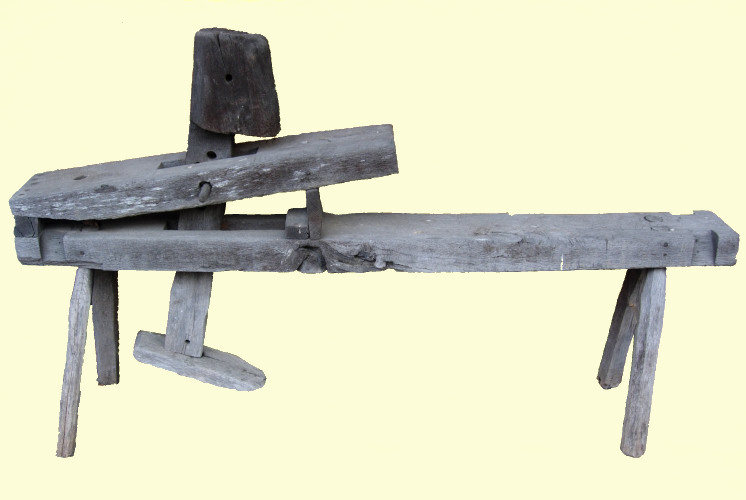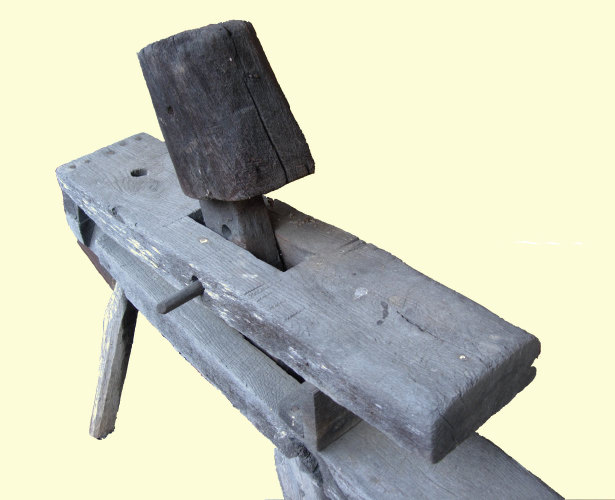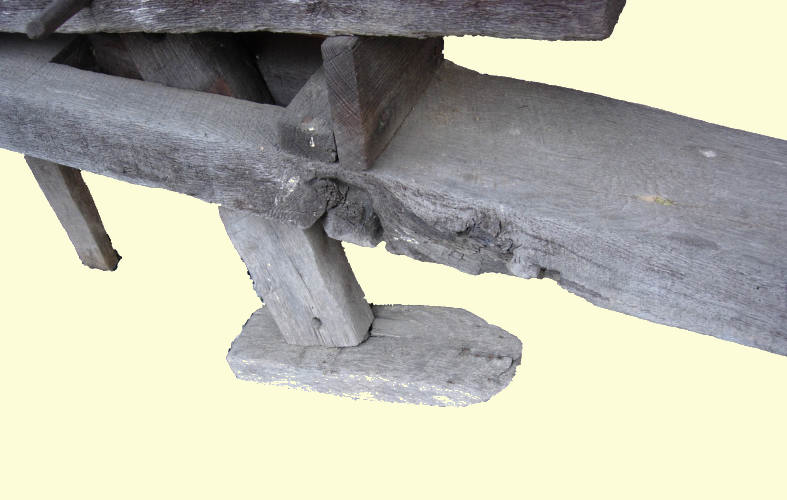


| Similar to the Harness Maker's Bench exhibited previously, the Shaving Horse was simply a form of a vice. It was used in the production of wooden items, such as barrel staves or shingles, which needed to be shaped by shaving portions off with a draw knife. There are two styles of shaving horse: the German schnitzelbank or dumbhead, and the English bodgeris bench. The main difference between the two styles is in the head and how it attaches to the bench. The dumbhead style's head was constructed as a single, center lever with an end block that pivoted to hold the piece being shaved. The bodgeris style's head had two side levers and a crossbar that was pulled down to hold the piece being shaved. The item exhibited here would be one of the dumbhead style. The worker would sit with his legs straddled over the bench, and facing the horse's head. To begin, the head would be pivoted upward, as shown in the image below, and the piece of wood to be worked would be placed on the top, angled surface, called the bridge. The worker would then place one of his feet on the treadle or foot board and push forward. The head would be pivoted down, pinning the piece of wood against the surface. The harder the worker pushed on the treadle board, the tighter the piece to be worked would be held by the head. In the images, note that the arm, the pivoting piece of wood with the head on one end and the treadle on the other, has more than one hole, through which a peg is driven to create the pivot point. The reason for this was so that workers of different heights could adjust it to their own liking by simply moving the peg through a different hole. |


